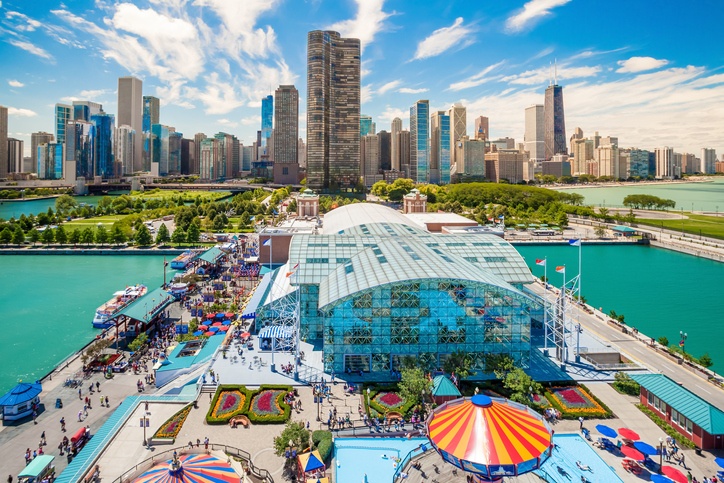Smith Island – The watermen and heritage of the Chesapeake Bay can be experienced in a modern-day version of Colonial Williamsburg

Estimated Reading Time: 15 minutes – SBFL 4* – VISITED – Prepare to slow down, way down, get on island time and adjust your expectations by following the recommendation provided by one of the gift items on the island. It reads “Keep calm and put your flip-flops on.” Don’t look for a quick touristy fix that you can take in within 2½ hours. Plan for your trip in advance, consider my recommendations below, and you will be rewarded with a great experience — the living version of a heritage museum.
If you catch a boat to Smith Island from Crisfield, MD or just simply arrive with your own boat, know that island time has been in existence for well over 300 years. It is alive and waiting for you. Your boat is arriving at the living waterman villages of the Chesapeake Bay that have been permanently settled since 1686. English farmers John Evans and John Tyler came via Accomack County, Virginia, and migrated to the island to become the first permanent settlers.

Today, you will see a sizable number of Tylers, Evans, Marshalls, and Bradshaws on the island. Residents, 98 percent of whom are in their 40s or older, are spread around three villages: Ewell, the largest and home to the island’s school and most of its businesses; Rhodes Point, two miles down a narrow road from Ewell through the wetlands to the southwest; and Tylerton, which is on a separate small island. Huge wetlands surround them. Total population these days, we were told, is around 180. Depending on which boat you may have taken from Crisfield, you may land on either Ewell, as in our case, or Tylerton. You can also arrange a private boat to Tylerton from Ewell. The best bet is to ask at the museum in Ewell. Other transportation on the islands is provided by a very limited number of motor vehicles and a lot of eco-friendly golf carts, as well as bicycles.

What has changed on the island in more than half a century … nothing?
It is a great, sunny summer morning; a gently blowing breeze is on our faces. The green waters of the Bay are almost as flat as a pond. We were lucky to fall into a special Sunday when an early 9:30 a.m. boat was available, rather than the usual 12:30 p.m. departure. We took a small red boat named Captain Jason, from the Crisfield municipal dock, on the way to a huge cluster of marshy islands named Smith Island. The boat is the type of strong, workmanlike boat that locals use daily for passengers, as well as small hauls. The Captain of the boat is in his 60s. I asked him what has changed on Smith Island as far as he can remember. His answer, with the distinctive island drawl that seems to mix a Cornwall accent with Bawlmerese dialect, was sincere and frank, “Nothing.” As an outsider, I am confident that things must have changed, at least since 1973, but I did not want to push the topic and unnecessarily irritate the Captain.

As a part of my planned SBTF* series visits, my wife and I are on our way to the island for an overnight visit. What happened to our boat, Life’s AOK? Well, in this trip, she forced us to take another boat. Yes, she broke down and I still hold that against her. This was one of those trips for which we should have had our own boat, for sure.

We are on a mission to discover then and now
We are on a mission to find out about life on the Atlantic Intracoastal Waterway (ICW) and compare then and now, based on observations made by Dorothea and Stuart E. Jones in their 1958 National Geographic article titled, “Slow Boat to Florida” (hence the title of my SBTF* series) and a 1973 book published by National Geographic, titled America’s Inland Waterway (ICW) by Allan C. Fisher, Jr.
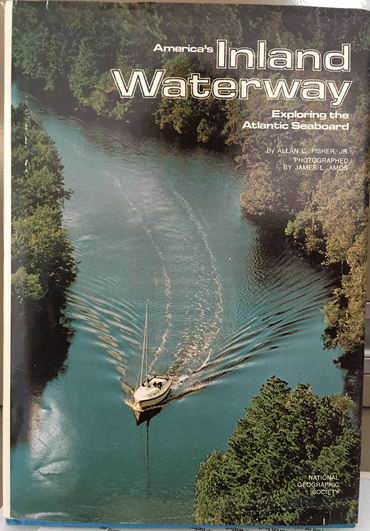
Between the two National Geographic authors, only Fisher stopped by the island in 1973. He wrote, “On an overcast morning, but with a favoring breeze from the northeast, we sailed for Smith Island. Ewell, one of three communities on the island, qualifies for the adjective ‘quaint’ more than any other spot on the Chesapeake. It can claim two main streets, one a waterway lined with rickety, spindly piers and sagging, weatherbeaten crab cribs, the other narrow roadway flanked by neat little homes with minuscule front yards.” He continued saying, “Smith has no municipal building, no jail-indeed, no government. Practically everyone belongs to the United Methodist Church.”

In this trip, we are visiting Smith Island to get a feel for the island and to experience the village life of the watermen that is the heritage of the Chesapeake Bay. We would talk to old timers, as well as meet newcomers, if any, and just have fun together.
So what does the village of Ewell look like in 2019?
The Smith Island of 2019, all said, is still picturesque, charming, sweet, attractive, and pleasantly old-fashioned, but gone was the “waterway lined with rickety, spindly piers and sagging, weatherbeaten crab cribs” of Ewell, as Fisher described. That is definitely progress. Watermen are still doing crabs and softshell crabs, a delicacy, but the structures of the shore line looks much better now. The village of Ewell has claims two main streets and a third one stretches out to the other side of the island about 2 miles to the tiny village of Rhodes Point, complete with a heliport, a spot where a helicopter can land on the road. Just as in 1973, the island still has no municipal building, but now it has a community association building filling that role, which was required by the Army Corps of Engineers, which is helping out the islands with some work. And yes, there is still no police or jail. Why? Because they do not need it. I suppose you do not dare to be bad in 3 small villages with a total of a couple of hundred of residents. I guess if nothing else gets you, the shame of being bad would and you would no longer be able to live on the island.

As Fisher described back in 1973, the island had a “few old cars, brought over by boat, run up and down the one road. Until recently, the cars were unlicensed.” Guess what, now in 2019, you can still occasionally spot a few cars, running without license plates. However, now most of the personal transportation is done by electric golf carts, which can also be rented on the dockside in front of the Bayside Inn Restaurant, that was not there in 1973.

Calling in a helicopter is always an option
Back then, the island did not have a doctor, and now it still does not have one. Although the old timers that we talked with do not remember when the last time was that they had a doctor on the island, they know for sure that over the years they certainly had their share of doctors that were on the island for a duration. They were Dr. Hunt, Dr. Gentry (an Army doctor who is buried on the island), Dr. Kidney, and Dr. Soar.

Back then, in 1973, Schim Becker, a young Australian nurse who came to marry an Australian physician and instead married an artist and moved to Smith Island, attended to the medical needs of the islanders and sometimes she called in a helicopter for serious cases. We learned that her husband passed away and she is now living on the mainland. However, we were told that she was there visiting and left the day before we arrived. What a pity! I wish we could have said hello and talked to her. What about the current medical needs of the islanders in 2019? Today, four members of the fire department are Emergency Medical Technicians (EMTs.) Also, just as in the case of nurse Becker’s time, when there’s anything that the EMTs can’t handle, they call the helicopter from Crisfield and it arrives within 17 minutes to take the patient to the hospital on the mainland.
You do not have to worry about buying bottled spring water. It is all already there. The island has six deep artesian fresh water wells tapping into the water table and streamed down from the mountains in Pennsylvania. It gets its electricity from Tangier Island, VA, which in turn it gets it from the Virginia mainland. In addition, they have backup electricity to support the entire island. They did have septic tanks until the public sewer and sewage treatment plant was built.
A home called Smith Island
Fishers’ book has two great pictures taken on the island back in 1973. The first is of a cute young boy, mischievously smiling in a classroom. The caption reads, “Don Bradshaw can’t keep a straight face for the photographer during class in Tylerton, another village on the island. The second picture shows three young children in a boat with an older man in the back. The caption reads, “Older children ride in Ullie Marshall’s ‘school boat’ from Tylerton to Rhodes Point where a bus takes them on to Ewell. After eighth grade, students take another boat to high school on the mainland.” We wonder where they are.

It is time to meet and greet the residents. Thanks to Mary Ada Marshall, a super special resident of the island who lives in Tylerton, her husband Dwight Marshall and a few more seasoned residents, Wesley and Faye Bradshaw, Hester Smith, all in their 70s, and a young entrepreneur, the owner of Smith Island Bakery, new believer in Smith Island Darren Jones, we had a great discussion and lunch at the Bayside Inn Restaurant.
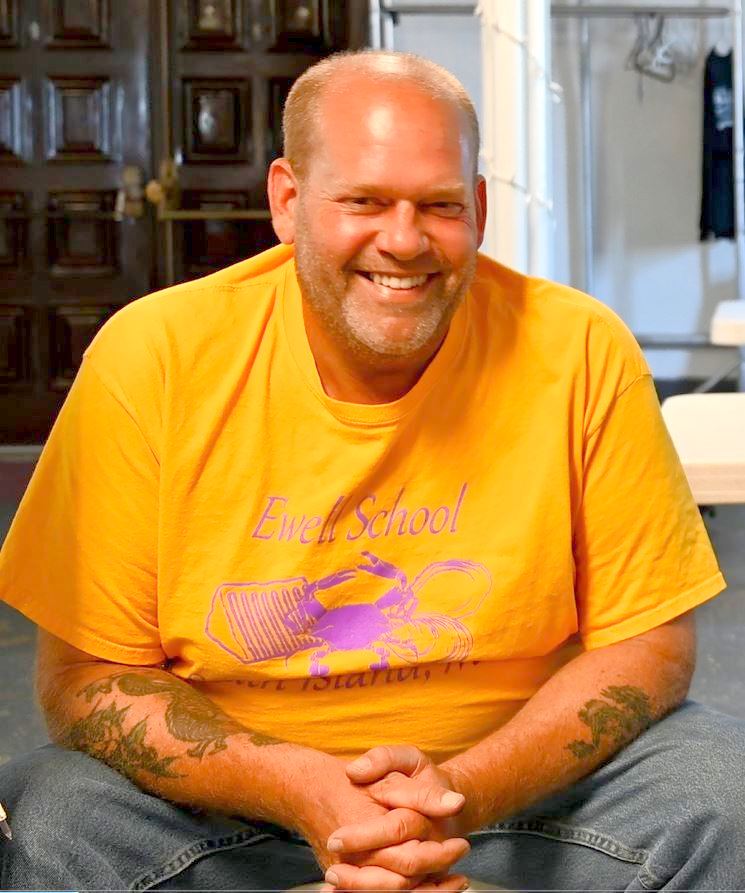
What a great gathering and lunch, not to mention fantastic crab cakes. (Don’t tell neighboring Tangier Island residents but this one was a notch better than theirs. However, please don’t assume that Tangier’s version was a pushover kind either. No sir, it was not.) There was also delicious corn pudding, stewed tomatoes, and a lot more. It is now 12:40 pm, and the sizable restaurant is literally full. The island is hosting a Methodist camp and most patrons streamed over from the church.
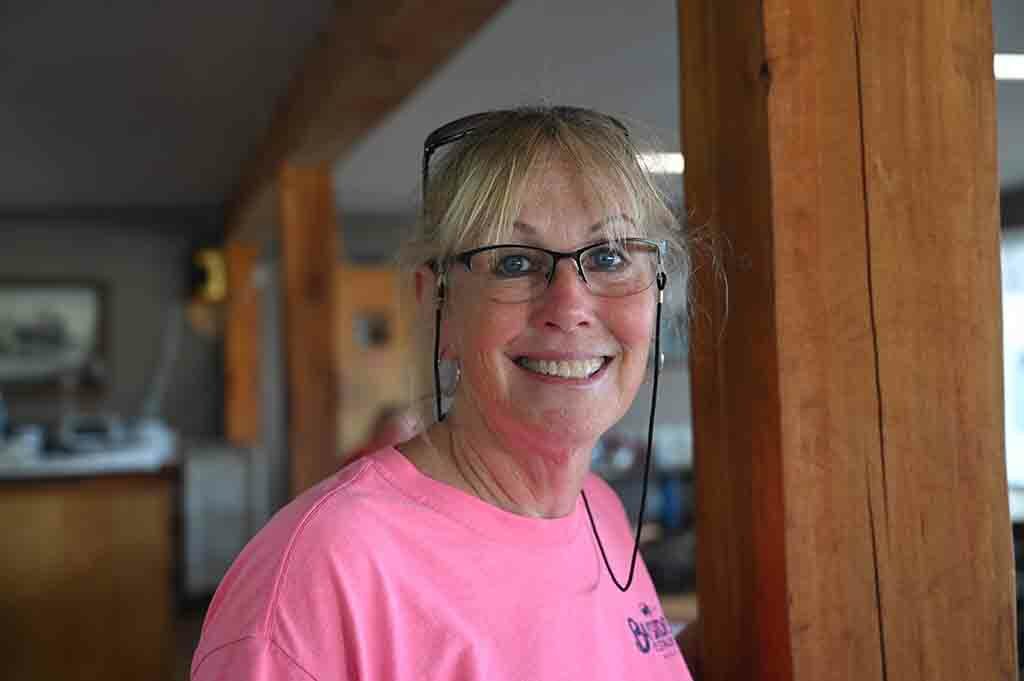
It is a festive moment and the restaurant is up to the task, along with the owner/manager, Betty Jo Tyler. She is also the mother of Tyler Tyler, 23, the youngest waterman of Smith Island. We would have loved to have met and talked to him, but he is nowhere to be found.

However, luckily we bumped into Dustin Smith (33) and his brother Daniel Smith (35), grandsons of Hester Smith.
Smith Island’s waterman pipeline between Tyler (23) and Dustin (33) is dry, so to speak, with no one in between. After Daniel Smith (35), the next youngest watermen are in their 50s and older. In other words, there is a huge gap between the ages of the Smith Island waterman. Their numbers are dwindling, along with the Chesapeake Bay’s seafood resources, due to regulations that are trying to create a sustainable environment to serve generations to come.
Life in the island
We show the photographs and ask seasoned islanders over lunch if they can tell us more about the islanders in the photos. Everyone was surprised about the book and the photos. Perhaps Fisher’s visit was not remarkable, but they all know who is who in the photographs.

It turns out that Wesley is the uncle of Don Bradshaw that Fisher met back while he was in school. We ask about him, and he says Don is now in Baltimore. What about the occupants of the school boat? Mary Ada says Ullie Marshall passed away a while ago. The other older kids become the subject of discussion. One is very easy to identify, it is Denise Marshall; she passed away. Allen Smith, Jr. is still on the island. The last one is Janet Evans, she is now a teacher on the island.

Ullie Marshall’s “school boat” back then gave way to a sizable catamaran-style power boat owned and run by Captain Alan Tyler.
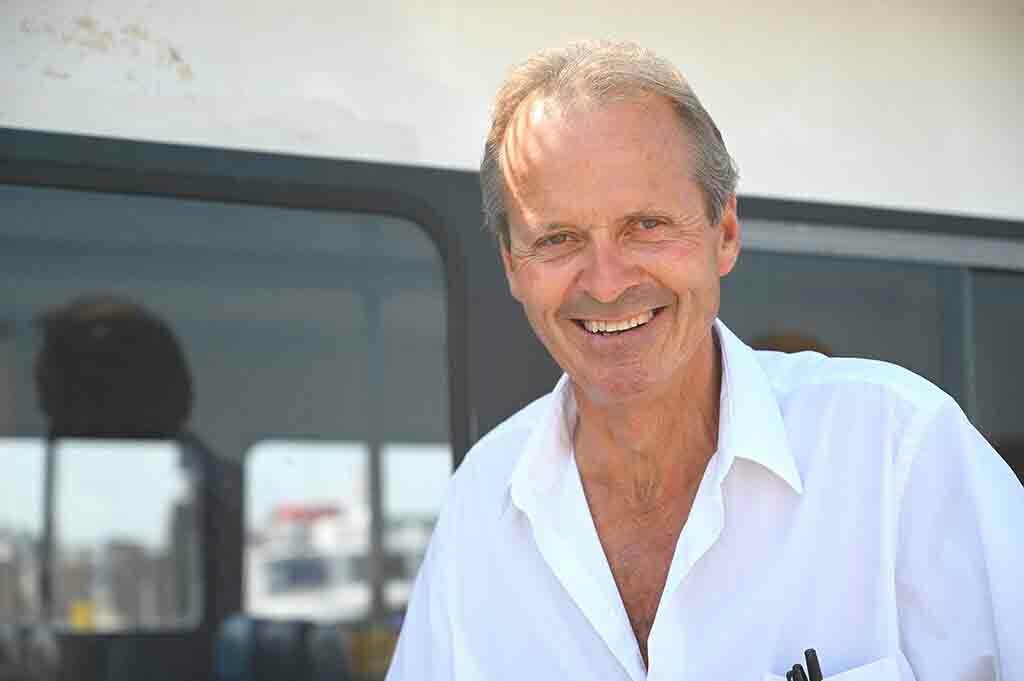
Talk about progress! Eventually, the discussion leads to the old days on the island and how it is now and the Smith Island cake.
It is the Mary Ada Marshall, should we say more?
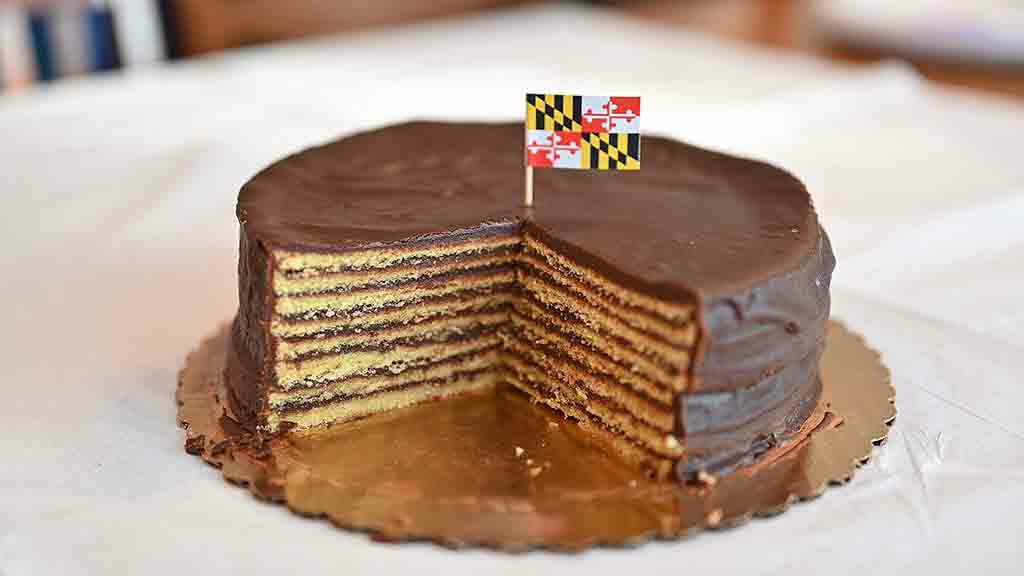
If you have eaten or just seen a picture of the famous Smith Island Cake, as in our blog or elsewhere, start thinking of one person, Mary Ada Marshall. She and a few others are keeping the tradition and waterman way of life viable for all residents, Maryland State, and tourists alike.

Mary Ada, a highly charismatic and dynamic 70 something, is married to Dwight Marshall, a retired waterman, and they live in Tylerton (population 36).

Mary Ada is the one, with the support of Somerset County, Maryland officials, who put the Smith Island cake on the map as the official State Dessert of Maryland. That was after doing 6 long trips from Smith Island to Annapolis, Maryland’s capital. She delivered many, many homemade Smith Island cakes, to lawmakers. She is a natural lobbyist, a ‘must to meet’ ambassador of Smith Island. Perhaps the cake recipe is not secret, since it is all over the internet, but to me, if it is not physically made in Smith Island, it is not the real McCoy. You know, it’s like calling a bubbly sparkling wine, Champagne. It needs to come from its rightful birthplace, using its water and people, to call it Smith Island cake, full stop. Trust me, it definitely tastes different.

If you are near or far away from the island and would like to taste a bit of the island pallette, no worries. Mary Ada in Tylerton (she can bake only 10 cakes a day), as well as Smith Island Bakery in Ewell, can produce much more for you. They are shipping them all over the world and helping to keep their post office viable and open, which is one of the lifelines of the island.
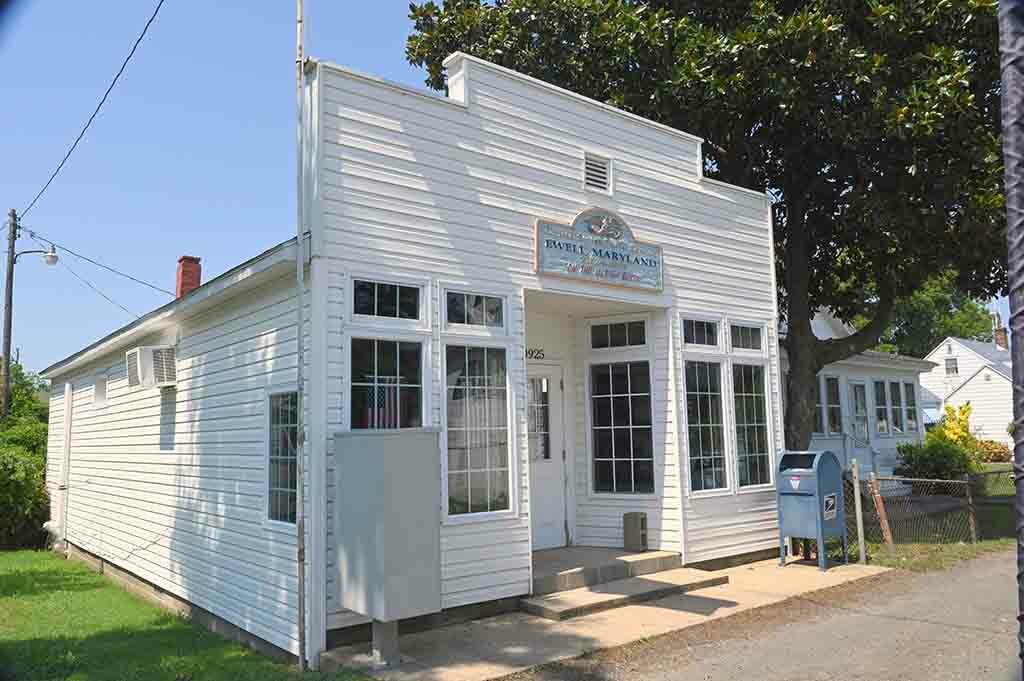
You should know that by buying from them directly, you are contributing to the island’s economy directly, as well as keeping the post office of the island open. As I wrote in one of my past blog posts titled “SBFL 4* – Smith Island, its famous cakes and all,” until 2009 there was no Smith Island bakery on the island, until a New York entrepreneur opened a shop. However, he ended up moving out of the island after a while and taking the bakery business with him, posting a note on the bakery door and leaving several islanders unemployed without notice. That is when Smith Island Bakery was born, at the same spot where the Smith Island Baking Company had started producing their signature cakes. Relative newcomer, Darren Jones, from the western shores of the Bay, took over the spot and is keeping the flame going for all the islanders, along with Mary Ada.
Olden days
Hester Smith (79 years young) says, “You could say the islands are one big family. Everybody knows everybody. And when somebody has trouble in the community, like a death or something, the whole family, the whole Smith Island comes together and supports them. That’s one good thing about our island. We all work together and everybody knows everybody.”

“We would get up, of a morning, and go down and pick six pounds of claw [crab] meat and come home and take a shower and go to school. It was something we liked to do and they give us money. And you know what we got? We got 19 cents a pound. I had to pick six pounds to make a dollar before I went to school and then we’d come home. We’d come home and we played and played until it was dark and we had to come in. Now the kids today, all they want to do is be on the phone on these computer things and never say a word. Never go out and mix with the kids. They do not. They do not play no more. That’s the difference. Don’t play together. No, no, no. So that’s the change in the children,” says Hester.

Mary Ada adds, “That’s why we’re all close to each other. We had dances on Saturday night. The Tylerton boys would come up to Ewell to the fire hall and they wanted to date the Ewell girls and we wanted to date the Tylerton boys.” Wesley, who also grew up in Tylerton, jumps in and explains their Saturday night trips in between the two villages by saying that, that is why they wanted to go Ewell, because dating the girls in Tylerton felt like you were dating your sister. That is how Hester (14) met her late husband and got married. Hester says “back then [late 1940s] we grew up faster then. Today, my God, they don’t even know how to wash a dish now, at that age.”

Back then, they had three jobs available for a man on the island. They were either a waterman, worked in a store, or worked at the post office.

What else changed since 1973? Hester says, “So much! Now we have a jetty. It’s unbelievable. Tylerton has got so much help, too. We’ve got a bulkhead around the island. And a new boat ramp this year.”
New believers in Smith Island
Katherine Donaway moved to Smith Island five years ago. Originally from the town of Princess Ann, Maryland, one day she visited the island. It was right around the time of her husband’s retirement. She fell in love with nature and the island’s peaceful environment. She says, “It seeps into your pores, you know, it takes you back to when you were a child and growing up in a small town. I moved here and then my sister moved here and then my mom followed her and then my son moved here.” One of her sons works in the “railway” at Rhodes Point. Islanders call the boat yard the “railway,” where they used to pull the boats off the water onto rails for repairs.

Perhaps the Venice of the Chesapeake Bay is in the making
All are saying that Smith Island is in danger of being lost. Islanders say, “We’re washing away. We’re not sinking, it is the erosion, nothing is there to stop it.” Some scientists say that sea levels are rising, others add that they are sinking as well. I would say whatever the reason is, to me, there is a great opportunity to create a fantastic destination. It is now and could be for many centuries to come, a new Venice in the making. Venice, Italy, was not built on solid ground, but on a cluster of 117 mud islands connected by 177 canals. It dates far back into the Roman empire when it was broken up into small villages with houses built on stilts. The canals function as roads and every form of transportation in the City of Venice is on water or on foot. If a few visionary corporations like Disney Design and Development Company, who tried to build a History Theme Park in Virginia and then abandoned it, would partner with Somerset County, Smith Island, and Crisfield, Maryland residents to build a Colonial Williamsburg-like Chesapeake Bay Heritage and American History park, encompassing the islands and Crisfield, things could easily turn around to all parties’ satisfaction. Can it be done? Absolutely. But that is a different story and vision to pursue.
Well, that’s it for now. Stay well. I hope to say hello to you if you spot my boat, Life’s AOK, in one of the locations that I’m hoping to visit in 2020.
I bid you Fair Winds and Following Seas.
Cover photo: Daniel Smith, waterman of Smith Island
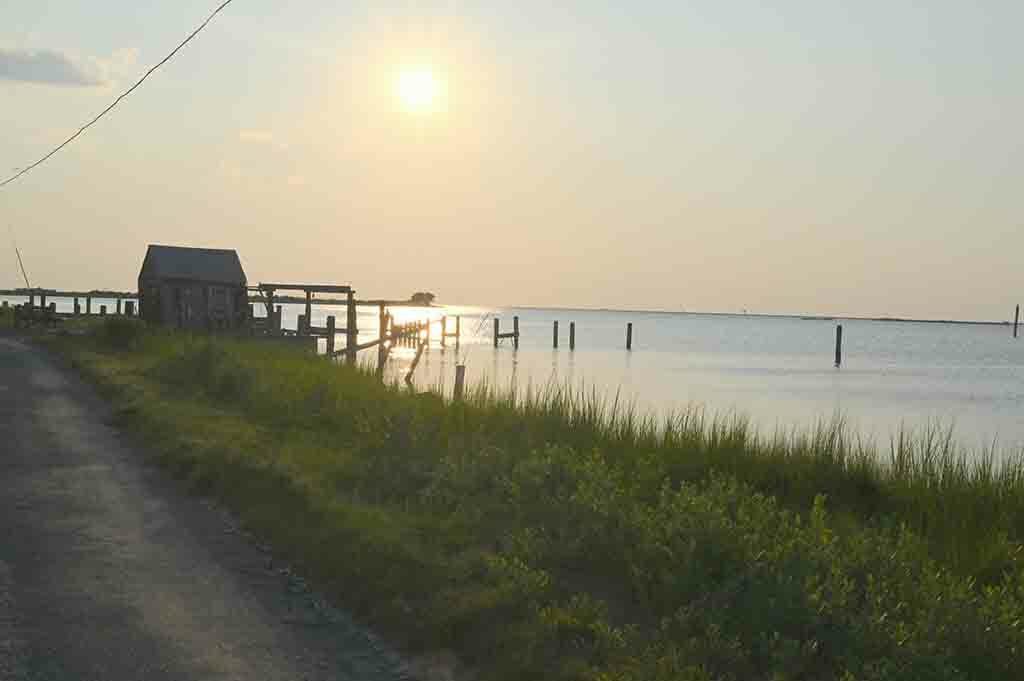
6 things I learned
- If you look at the nautical charts, you may notice that the waters surrounding the island are quite shallow. However, there is great news for boaters. The channels on both sides of the island were dredged in 2019 and are now 8′ deep, providing a very hospitable waterway for boaters.
- There are private boats that would take you from Ewell to Tylerton. It is best to talk to the museum in Ewell to get contact information and then make advance reservations with boat owners directly. Since Tylerton is on a separate little island, 1.5 miles away, a boat is the only way to reach it.
- The Smith Island Cultural Center & Museum in Ewell is the flag bearer of the town.
- Smith Islanders have a distinctive island drawl that seems to mix a Cornwall accent with Bawlmerese dialect. If you want to hear the Smith Island accent, try this link.
- The Chesapeake Bay Foundation has the Smith Island Environmental Education Center and a great program in their center in Tylerton. The programs provide their own transportation from Maryland as well as Virginia.
- You should not miss visiting Tylerton.
9 things I recommend
- Buy a Smith Island cake directly from Smith Islanders. Call Mary Ada Marshall in Tylerton at (410) 425-2023 (she does not have a web site) or the Smith Island Bakery in Ewell at (410) 425-2018. By buying directly from the Island and islanders, you are looking at the real McCoy. We are talking about champagne vs. sparkling wine. Support the islanders.
- Smith Island Cake Academy of the Smith Island Bakery offers overnight guests of the island a hands-on experience creating their very own Smith Island Cake.
- Go to this link of Tripadvisor.com and check out a collection of photos of Smith Island.
- Also go to this link to see Tylerton, MD.
- Check out the VisitSmithIsland.com, Smith Island This Week as well as the Smith Island Experience and Bay Dreaming sites for more information.
- Take the Smith Island Cruises boat. They leave from Crisfield, MD, on the Eastern Shore, as well as from Point Lookout, MD, on the Western Shore of the Chesapeake Bay.
- Consider taking advantage of the Paddling Around the Island program of Smith Island. You must plan in advance.Smith Island is a Paddler’s Paradise due to its 800 acres of marshlands with creeks and rivers connecting all three communities on the island. So if you want you can paddle your kayak or canoe all over the island.
- Check out the Delmarva Birding Weekend site for Brown Pelican tours to Smith Island. It is an award-winning pelican colony tour and they have been running it for more than 20 years. You must plan in advance.
- Consider attending the Smith Island Environmental Education Program provided by the Chesapeake Bay Foundation. You must plan in advance.

How easy?

*SBFL stands for Slow Boat to Florida. It is a series of my blog posts, which started with a posting that had the same title. Each numbered heading has two parts. The first is “Planned or Planning to visit,” and when we visit the planned location, a “Visited” label appears at the beginning, next to SBFL. The essence of this series is not to seek new lands and exotic cultures. Rather, it is to cover our journey of discovery (hence the title of our blog Trips Of Discovery) that has to do with seeing with a new eye the coastal locations of the Atlantic Intracoastal Waterway (ICW) where present-day America started to flourish. The SBFL series represents part travel, part current and historical anthropological highlights of selected locations and coastal life. We’re comparing then and now, based on observations made by Dorothea and Stuart E. Jones in their 1958 National Geographic article titled, “Slow Boat to Florida” and a 1973 book published by National Geographic, titled America’s Inland Waterway (ICW) by Allan C. Fisher, Jr. We also take a brief look at the history of the locations that I am writing about. Finally, we bundle it up with our observations during our actual visits to the locations and our interviews with local residents. Think of it as a modest time capsule of past and present. My wife and I hope that you, too, can visit the locations that we cover, whether with your boat or by car. However, if that is not in your bucket list to do, enjoy reading our plans and actual visits as armchair travelers anyway. Also, we would love to hear from you on any current or past insights about the locations that I am visiting. Drop me a note, will you?












